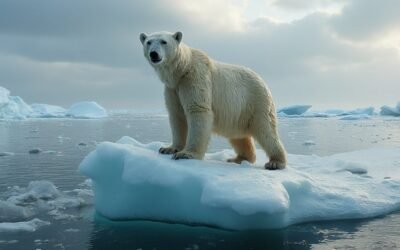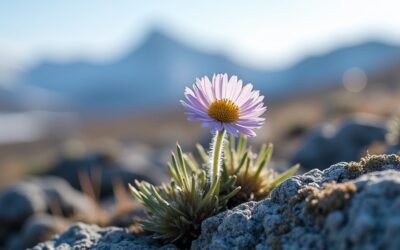Traditional reindeer herding in the Scandinavian Arctic relies on seasonal cycles to ensure prime grazing. Summer offers rich pastures while winter demands supplementary feeding. Essential techniques include migration planning, earmarking, and behavior monitoring. While modernization introduces new challenges like technology integration and cultural erosion, it also aids sustainability. Environmental threats such as overgrazing and industrial activities impact the practice. Preserving Sami cultural traditions and knowledge is crucial for sustainable herding. Addressing climate change and enhancing community empowerment are key to the future of this ancient practice. To better understand the intricacies and sustainability efforts, explore further details.
Main Points
- Seasonal cycles optimize grazing: lush summer pastures, autumn round-ups for health, and supplementary winter feeding.
- Traditional techniques include ski transportation, earmarking, behavior monitoring, and migration planning.
- Sami cultural preservation involves language transmission, land rights, and balancing modernization with tradition.
- Environmental conservation ensures ecosystem balance, minimizes pollution, and protects wildlife corridors.
- Community empowerment strengthens governance, promotes youth involvement, and supports sustainable livelihoods.
Seasonal Herding Cycles
Traditional reindeer herding in the Scandinavian Arctic meticulously follows seasonal cycles to guarantee the well-being and sustainability of the herds. This practice involves moving the reindeer to different pastures throughout the year, ensuring ideal grazing conditions and effective herd management.
During the summer months, reindeer graze in lush pastures, benefiting from abundant vegetation that supports their nutritional needs. As autumn approaches, herders conduct round-ups, a vital period for marking, castration, and selection of the herds. These activities are crucial for maintaining the health and genetic diversity of the reindeer population.
The winter season presents more challenges, necessitating supplementary feeding to sustain the herds during harsh conditions. Herders use skis to access remote areas, ensuring they can provide necessary care to the reindeer. This period requires diligent management to prevent malnutrition and maintain herd importance.
Spring is marked by calving, a key time for the birth of new calves. Herders closely monitor the health and development of both mothers and newborns, preparing them for the upcoming migration to summer pastures. This cyclical approach to reindeer herding exemplifies a harmonious balance between traditional practices and the natural environment.
Traditional Herding Techniques
Building on the understanding of seasonal herding cycles, traditional herding techniques encompass a range of practices that guarantee effective management and sustainability of reindeer populations. A critical component of these methods involves the use of ski transportation, which enables herders to navigate snow-covered terrains efficiently. This method not only facilitates herd management but also allows herders to quickly address any issues that arise within the herd.
Reindeer categorization is another crucial aspect, where animals are classified based on age and gender. This categorization informs decisions on earmarking, slaughtering, and castrating, ensuring that herd dynamics are maintained optimally. Additionally, herders employ meticulous reindeer behavior monitoring to track the health and well-being of their animals.
Seasonal movements play a pivotal role in traditional herding techniques, with herders planning migrations to summer pastures and calving areas. This migration planning is essential for guaranteeing that reindeer have access to the best nutritional resources throughout the year.
Key traditional herding techniques include:
- Ski transportation: Ensures efficient movement and management in snowy conditions.
- Reindeer categorization and earmarking: Facilitates effective herd management.
- Migration planning: Coordinates seasonal movements to best pastures and calving areas.
These methods demonstrate the intricate balance of traditional knowledge and practical skills required for sustainable reindeer herding.
Modernization Effects
Modernization in reindeer herding practices has introduced significant technological advancements, such as snowmobiles and mechanical aids, which have revolutionized traditional methods. While these innovations have enhanced efficiency and expanded operational capabilities, they also present challenges related to integrating technology with traditional knowledge and practices. Additionally, economic shifts and concerns over cultural erosion necessitate careful consideration to balance modern benefits with the preservation of heritage and sustainable practices.
Technology Integration Challenges
The integration of modern technologies such as snowmobiles and mechanical aids into reindeer herding practices presents significant challenges to preserving traditional knowledge and methods. While technological advancements have revolutionized reindeer herding in the Scandinavian Arctic since the 1960s, they have also impacted the transmission of essential traditional practices. Balancing these modern technologies with traditional methods is vital for maintaining sustainable reindeer husbandry.
Several challenges arise from this integration:
- Transmission of Traditional Knowledge: The reliance on snowmobiles and mechanical aids can diminish the hands-on learning of traditional skills, which are typically passed down through generations. This threatens the continuity of indigenous cultural heritage.
- Environmental Impact: Modern technologies, while efficient, can disrupt the natural landscape and wildlife. Traditional reindeer herding methods are often more attuned to the environment, fostering a sustainable coexistence with the Arctic ecosystem.
- Economic Pressures: The cost of acquiring and maintaining snowmobiles and mechanical aids can be prohibitive, creating economic disparities among herders and possibly leading to unsustainable practices.
Therefore, a balanced approach that integrates technological advancements while preserving traditional knowledge is essential for the long-term sustainability of reindeer herding in the Scandinavian Arctic.
Economic Shifts Impact
While balancing modern technologies with traditional methods is essential, the economic shift towards a market economy has further complicated traditional reindeer herding practices in Scandinavia. The introduction of modern technology, such as snowmobiles and mechanical aids, represents significant modernization effects that reindeer herders must navigate. This influx of technology necessitates a careful integration with traditional knowledge to guarantee the sustainability of herding activities in the Scandinavian Arctic.
Reindeer herders are increasingly required to adapt to the demands of a market economy, which has altered their traditional livelihoods. These economic shifts have led to a reliance on agreements like the Reindeer Husbandry Agreement in Norway, which provides essential economic support to herders. However, this support is often dependent on herders adopting modern technology and practices, presenting a dual challenge of maintaining tradition while embracing modernization.
The tension between traditional knowledge and modern technology is palpable, as herders work to sustain their way of life amidst these economic changes. The sustainability of reindeer herding hinges on finding a balance that respects cultural heritage while accommodating necessary advancements. Ultimately, the evolving economic landscape in the Scandinavian Arctic demands that herders remain adaptable and resilient.
Cultural Erosion Concerns
As traditional reindeer herding practices confront the pressures of modernization, cultural erosion has become a noteworthy concern. Among the Sámi and other reindeer herding groups, the modernization effects are evident through the loss of cultural knowledge and practices. This phenomenon is driven largely by several factors:
- Industrial Activities and Infrastructure Development: Increased industrial activities, such as mining and forestry, along with infrastructure development, disrupt traditional herding routes and habitats. These activities lead to environmental impacts that threaten the viability of traditional herding methods.
- Socio-Cultural Challenges: The out-migration of youth, the loss of indigenous languages, and assimilation policies contribute significantly to cultural erosion. As younger generations leave for urban centers, they often lose touch with traditional practices, leading to a gradual decline in traditional knowledge preservation.
- Environmental Impacts: Modern practices, including forest cutting and noise pollution, further exacerbate the challenges faced by reindeer herding groups. These environmental impacts disrupt the natural habitats essential for reindeer, making traditional herding increasingly difficult.
Efforts to preserve traditional knowledge and practices are pivotal in combating these modernization effects. Initiatives aimed at cultural preservation, such as education programs and community engagement, play a crucial role in ensuring the survival of these age-old traditions.
Environmental Challenges
Environmental challenges greatly complicate traditional reindeer herding, demanding adaptive strategies for sustainability. One primary issue is overgrazing, which results from fenced-in pastures limiting grazing areas. This practice disrupts the natural husbandry methods used for centuries, leading to environmental damage. Noise pollution from modern transport vehicles further exacerbates the situation, disturbing both the reindeer and their habitat. Increased reindeer numbers also contribute to environmental degradation, intensifying the pressure on limited food sources.
As traditional knowledge wanes, modern herding methods struggle to adapt, making sustainability a critical concern. Industrial activities such as logging and mining pose significant threats to reindeer habitats, leading to habitat loss and diminishing essential food sources. These factors collectively challenge the viability of traditional reindeer herding practices.
Below is a table summarizing the key challenges:
| Challenge | Impact on Reindeer Herding | Consequences |
|---|---|---|
| Overgrazing | Limited grazing areas | Environmental damage |
| Noise Pollution | Disturbed natural habitat | Stress on reindeer |
| Increased Reindeer Numbers | Intensified pressure on resources | Depletion of food sources |
| Industrial Activities | Habitat loss | Reduced sustainability |
| Loss of Traditional Knowledge | Ineffective modern methods | Sustainability challenges |
Addressing these challenges requires a nuanced approach that blends both traditional wisdom and modern innovations.
Sami Cultural Preservation
The preservation of Sami cultural heritage is intrinsically tied to language and the transmission of traditional knowledge, which are critical for maintaining their reindeer herding practices. Issues of land rights and governance further complicate their ability to sustain these traditions in the face of modernization pressures. Addressing these challenges is essential to guarantee that the Sami can continue their way of life and protect their cultural legacy.
Language and Knowledge Transmission
Language serves as a cornerstone in the transmission of traditional Sami reindeer herding knowledge, with a rich vocabulary that reflects the intricacies of their cultural practices. The Sami language, integral to this transmission, offers a specialized lexicon that enhances effective communication among Sámi reindeer herders. This lexicon includes detailed reindeer terminology and snow terms, essential for precise herding practices and sustainable husbandry.
Key aspects of language transmission in Sami cultural preservation include:
- Reindeer Terminology: The Sami language contains numerous terms describing reindeer characteristics, behaviors, and conditions, enabling herders to manage their herds effectively and maintain traditional knowledge.
- Snow Terms: Exact terms for various snow conditions are crucial for herders. These terms help in making informed decisions regarding migration routes and grazing areas, reflecting the deep connection between natural phenomena and herding practices.
- Cultural Preservation: The transmission of traditional knowledge through the Sami language guarantees the continuity of sustainable husbandry practices. By preserving this linguistic heritage, Sámi reindeer herders uphold their cultural identity and expertise, crucial for the ongoing success of their herding activities.
Land Rights and Governance
Confronting significant challenges in land rights recognition and governance, Sami reindeer herders in Scandinavia struggle to preserve their traditional way of life. The Finnish Constitution acknowledges the Sami as Indigenous people but lacks specific provisions for land rights recognition, adversely affecting their land use practices. This legal gap leaves Sami reindeer herders vulnerable to conflicts over land use, especially when negotiating agreements with state logging companies.
In recent years, conflicts have intensified, particularly in regions like Nellim, where the UN Human Rights Committee has imposed a logging moratorium to mitigate these issues. Despite such measures, Sami communities, including those in Inari, continue to face threats from mining claims and other industrial activities that jeopardize their livelihoods and cultural heritage.
The limited protection offered by current agreements with state logging companies often fails to safeguard the traditional way of life for Sami reindeer herders. Consequently, the need for a more robust governance framework is evident, one that can effectively balance industrial interests with the preservation of Sami cultural practices. Addressing these governance challenges is vital for ensuring the sustainability of reindeer herding and the broader cultural preservation of the Sami people.
Impact of Modernization
Modernization poses significant challenges for the Sami people, affecting their cultural practices and traditional reindeer herding methods. The Sámi reindeer herding area has seen significant changes due to the introduction of technology, impacting the way traditional knowledge is applied and preserved. Conflicts with the Norwegian government have further complicated these issues, presenting obstacles to the cultural preservation efforts of the Sami community.
Efforts to balance modernization with the preservation of Sami cultural traditions are crucial. Here are three key points to highlight:
- Technology Integration: While technology can enhance efficiency, it often conflicts with traditional reindeer herding methods, leading to the potential loss of invaluable traditional knowledge.
- Government Policies: Actions by the Norwegian government have sometimes hindered efforts to maintain Sami cultural traditions, requiring a more collaborative approach to cultural preservation.
- Community Initiatives: Local initiatives aimed at balancing modernization and tradition play an essential role in ensuring that Sami cultural practices continue to thrive despite modern challenges.
Addressing these challenges requires a nuanced approach that respects both the heritage of the Sami people and the inevitability of modernization, ensuring a sustainable future for reindeer herding in the Sámi reindeer herding area.
Future Prospects
The future of traditional reindeer herding in the Scandinavian Arctic hinges on overcoming challenges posed by climate change, industrial activities, and land use conflicts. Sustainable reindeer husbandry relies heavily on Indigenous knowledge and traditional practices passed down through generations. Collaborative initiatives between reindeer herders, conservation organizations, and governments are essential for ensuring the future viability of this practice. These partnerships focus on balancing modernization and technological advancements with cultural heritage preservation, addressing issues such as land rights and environmental conservation.
Community empowerment is central to these efforts, ensuring that local herding communities have the resources and support necessary to sustain their way of life. Technological advancements in monitoring reindeer populations and tracking migration patterns can enhance sustainable practices without compromising traditional methods. However, these innovations must be integrated thoughtfully to respect and preserve the cultural heritage of reindeer herding.
Ultimately, the future prospects of reindeer herding in the Scandinavian Arctic depend on a multifaceted approach. By prioritizing environmental conservation, safeguarding land rights, and fostering community empowerment, stakeholders can work together to secure the long-term sustainability of this crucial cultural practice. Through these concerted efforts, traditional reindeer herding can continue to thrive amid changing environmental and socio-economic landscapes.
Conclusion
The continuation of traditional reindeer herding methods in the Scandinavian Arctic is essential for maintaining ecological balance and cultural heritage. While modernization presents both opportunities and challenges, the resilience of these practices is evident in their adaptation to environmental changes. The preservation of Sami cultural traditions remains integral to the future of reindeer herding. As contemporary issues are navigated, the sustainability and cultural significance of these methods will be vital in shaping future prospects.


